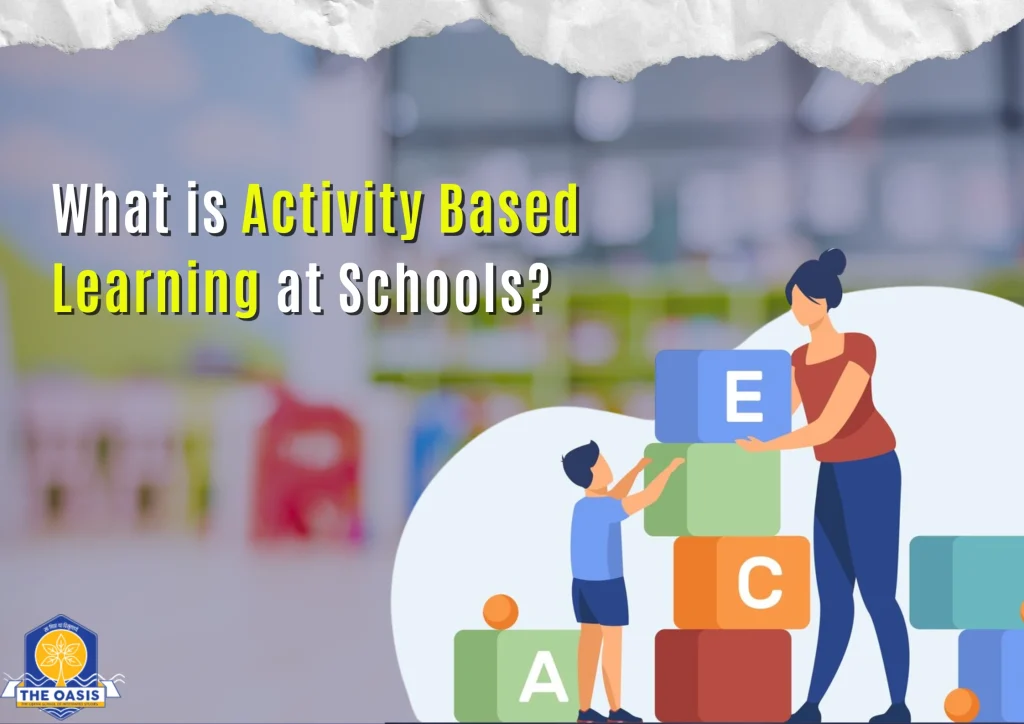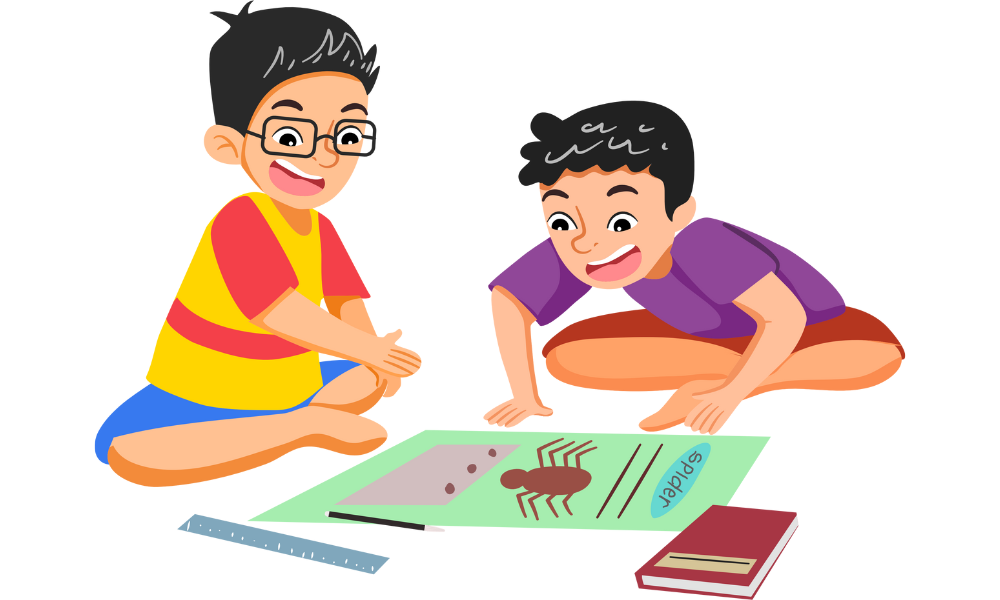 Imagine a classroom where students don’t just sit and listen but actively participate in experiments, role-plays, and real-world problem-solving. Activity Based Learning (ABL) is transforming the education system by making learning more engaging, practical, and student-driven.
Many institutions, including Boys Boarding Schools in Dehradun, are implementing this approach to ensure students grasp concepts effectively and apply them in real life. But what exactly is Activity Based Learning, and why is it crucial in today’s educational landscape? Let’s explore.
Imagine a classroom where students don’t just sit and listen but actively participate in experiments, role-plays, and real-world problem-solving. Activity Based Learning (ABL) is transforming the education system by making learning more engaging, practical, and student-driven.
Many institutions, including Boys Boarding Schools in Dehradun, are implementing this approach to ensure students grasp concepts effectively and apply them in real life. But what exactly is Activity Based Learning, and why is it crucial in today’s educational landscape? Let’s explore.
What is Activity Based Learning?
 Activity Based Learning (ABL) is a teaching approach that emphasizes learning by doing rather than passive absorption of information. It encourages students to actively engage in activities like problem-solving, discussions, projects, and hands-on experiments, fostering creativity and critical thinking. Unlike traditional methods that focus on rote memorization, ABL ensures that students understand and apply concepts practically.
Activity Based Learning (ABL) is a teaching approach that emphasizes learning by doing rather than passive absorption of information. It encourages students to actively engage in activities like problem-solving, discussions, projects, and hands-on experiments, fostering creativity and critical thinking. Unlike traditional methods that focus on rote memorization, ABL ensures that students understand and apply concepts practically.
Key Characteristics of Activity Based Learning

1. Student-Centered Approach
Students take an active role in their learning, exploring topics through real-life experiences, with teachers serving as facilitators rather than instructors.
2. Learning Through Experience
Hands-on activities such as experiments, case studies, and interactive projects allow students to gain a deeper understanding of subjects.
3. Integration of Theory and Practice
ABL bridges the gap between theoretical knowledge and real-world application, ensuring students can apply what they learn in practical scenarios.
4. Encourages Creativity and Innovation
By engaging in project-based learning, role-playing, and brainstorming, students develop innovative thinking and problem-solving skills.
5. Promotes Teamwork and Social Skills
Group-based activities encourage collaboration, communication, and leadership skills, preparing students for future professional environments.
Benefits of Activity Based Learning
 Enhances Knowledge Retention – Students remember concepts better when they actively participate in learning rather than just memorizing facts.
Develops Critical Thinking Skills – Encourages students to analyze problems and find creative solutions instead of relying on memorized answers.
Boosts Engagement and Interest – ABL makes learning enjoyable and interactive, reducing boredom and increasing student participation.
Encourages Independent Learning – Students take ownership of their education, making them more responsible and self-motivated.
Prepares Students for Real-World Challenges – Hands-on learning equips students with problem-solving skills and adaptability required for future careers.
Enhances Knowledge Retention – Students remember concepts better when they actively participate in learning rather than just memorizing facts.
Develops Critical Thinking Skills – Encourages students to analyze problems and find creative solutions instead of relying on memorized answers.
Boosts Engagement and Interest – ABL makes learning enjoyable and interactive, reducing boredom and increasing student participation.
Encourages Independent Learning – Students take ownership of their education, making them more responsible and self-motivated.
Prepares Students for Real-World Challenges – Hands-on learning equips students with problem-solving skills and adaptability required for future careers.
How Schools Implement Activity Based Learning

1. Project-Based Learning
Students work on long-term projects that require research, teamwork, and problem-solving. These projects can span multiple subjects and encourage interdisciplinary learning.
2. Case-Based Learning
Students analyze real or hypothetical scenarios and develop solutions, fostering critical thinking and decision-making skills.
3. Game-Based Learning
Educational games help students grasp complex concepts in a fun and interactive manner, improving engagement and retention.
4. Problem-Based Learning
Students tackle real-world problems that require analytical thinking, teamwork, and innovative solutions.
5. Experiential Learning
Activities like field trips, internships, and lab experiments give students first-hand experience, reinforcing theoretical knowledge with practical application.
Activity Based Learning vs. Traditional Learning
| Feature |
Activity Based Learning |
Traditional Learning |
| Learning Method |
Hands-on, interactive activities |
Passive listening and memorization |
| Student Role |
Active participant |
Passive recipient |
| Teacher Role |
Facilitator and guide |
Sole knowledge provider |
| Engagement Level |
High, due to interactive methods |
Low, often lecture-based |
| Knowledge Retention |
High, as students apply concepts |
Lower, due to rote learning |
Real-World Applications of Activity Based Learning
- Science & Technology – Conducting lab experiments, robotics workshops, and STEM projects.
- Mathematics – Using real-life scenarios for problem-solving, logic puzzles, and interactive activities.
- Language & Communication – Role-playing, storytelling, debates, and creative writing exercises.
- History & Social Studies – Recreating historical events, museum visits, and case studies.
- Environmental Studies – Gardening projects, sustainability initiatives, and field trips.
At Last
Activity Based Learning is reshaping education by making it more engaging, meaningful, and effective. By integrating hands-on experiences with academic concepts, students develop essential life skills such as critical thinking, creativity, and collaboration.
Schools, including Boys Boarding Schools in Dehradun, are recognizing the importance of learning based on activity in preparing students for future challenges. As education continues to evolve, adopting Activity-Based Learning will be key to fostering well-rounded, knowledgeable, and capable individuals.
Frequently Asked Questions (FAQs)
Ques 1. What is Activity-Based Learning?
Ans. Activity-Based Learning (ABL) is a teaching method where students actively engage in hands-on activities, experiments, and real-world problem-solving rather than passively receiving information.
Ques 2. Why is Activity-Based Learning important in schools?
Ans. It enhances student engagement, improves knowledge retention, and develops critical thinking, creativity, and problem-solving skills essential for real-world applications.
Ques 3. How does Activity-Based Learning improve knowledge retention?
Ans. Students remember concepts better when they actively engage in learning rather than passively listening. Hands-on activities and experiments make lessons more meaningful and easier to recall.
Ques 4. How do teachers facilitate Activity-Based Learning?
Ans. Teachers act as guides and facilitators rather than just lecturers, helping students explore, ask questions, and engage in interactive learning activities.
Ques 5. How is technology enhancing Activity-Based Learning?
Ans. Digital simulations, virtual labs, gamified learning, and AI-driven educational tools make ABL more accessible and engaging for students.
 Imagine a classroom where students don’t just sit and listen but actively participate in experiments, role-plays, and real-world problem-solving. Activity Based Learning (ABL) is transforming the education system by making learning more engaging, practical, and student-driven.
Many institutions, including Boys Boarding Schools in Dehradun, are implementing this approach to ensure students grasp concepts effectively and apply them in real life. But what exactly is Activity Based Learning, and why is it crucial in today’s educational landscape? Let’s explore.
Imagine a classroom where students don’t just sit and listen but actively participate in experiments, role-plays, and real-world problem-solving. Activity Based Learning (ABL) is transforming the education system by making learning more engaging, practical, and student-driven.
Many institutions, including Boys Boarding Schools in Dehradun, are implementing this approach to ensure students grasp concepts effectively and apply them in real life. But what exactly is Activity Based Learning, and why is it crucial in today’s educational landscape? Let’s explore.
 Activity Based Learning (ABL) is a teaching approach that emphasizes learning by doing rather than passive absorption of information. It encourages students to actively engage in activities like problem-solving, discussions, projects, and hands-on experiments, fostering creativity and critical thinking. Unlike traditional methods that focus on rote memorization, ABL ensures that students understand and apply concepts practically.
Activity Based Learning (ABL) is a teaching approach that emphasizes learning by doing rather than passive absorption of information. It encourages students to actively engage in activities like problem-solving, discussions, projects, and hands-on experiments, fostering creativity and critical thinking. Unlike traditional methods that focus on rote memorization, ABL ensures that students understand and apply concepts practically.

 Enhances Knowledge Retention – Students remember concepts better when they actively participate in learning rather than just memorizing facts.
Develops Critical Thinking Skills – Encourages students to analyze problems and find creative solutions instead of relying on memorized answers.
Boosts Engagement and Interest – ABL makes learning enjoyable and interactive, reducing boredom and increasing student participation.
Encourages Independent Learning – Students take ownership of their education, making them more responsible and self-motivated.
Prepares Students for Real-World Challenges – Hands-on learning equips students with problem-solving skills and adaptability required for future careers.
Enhances Knowledge Retention – Students remember concepts better when they actively participate in learning rather than just memorizing facts.
Develops Critical Thinking Skills – Encourages students to analyze problems and find creative solutions instead of relying on memorized answers.
Boosts Engagement and Interest – ABL makes learning enjoyable and interactive, reducing boredom and increasing student participation.
Encourages Independent Learning – Students take ownership of their education, making them more responsible and self-motivated.
Prepares Students for Real-World Challenges – Hands-on learning equips students with problem-solving skills and adaptability required for future careers.




